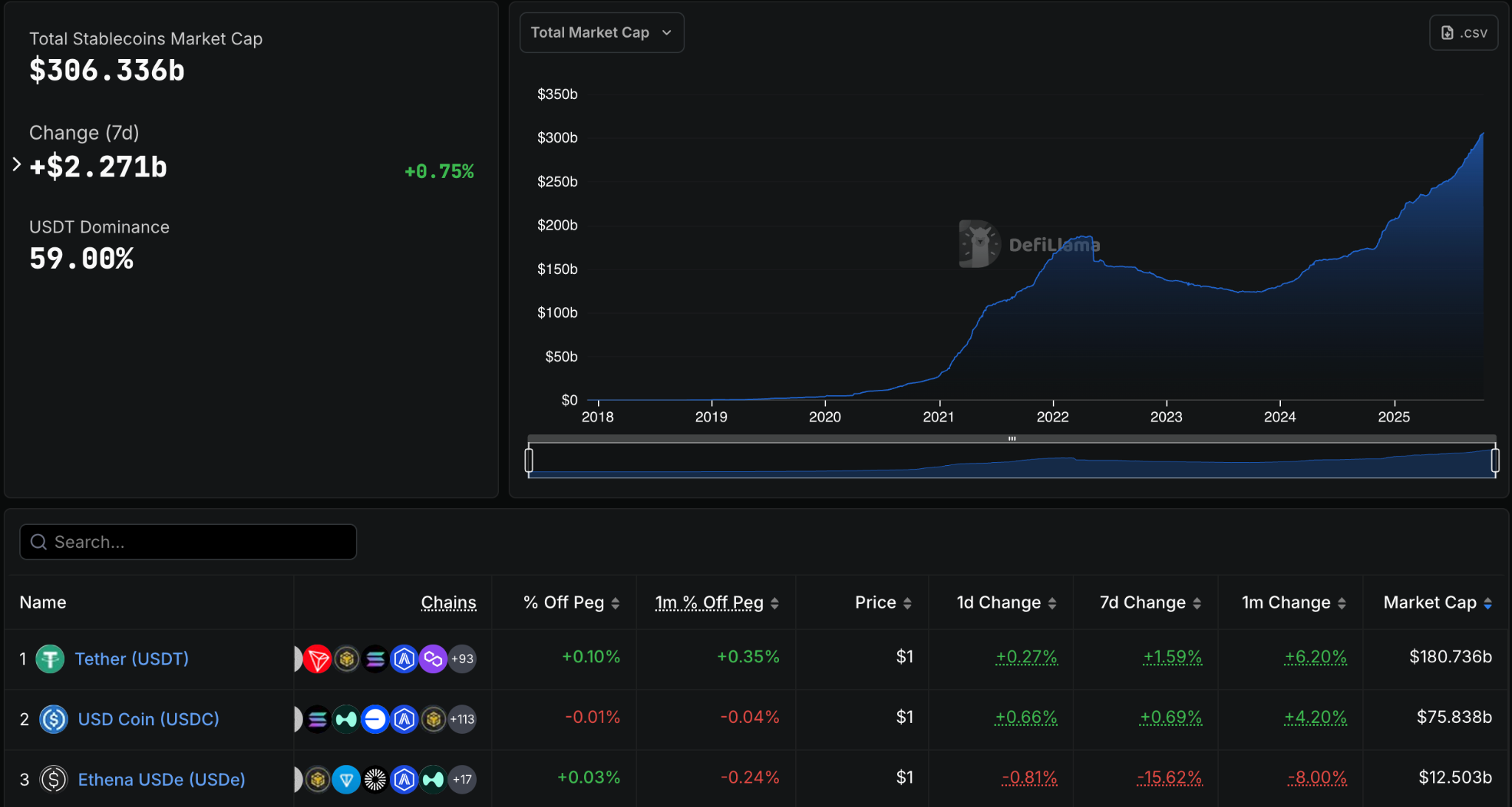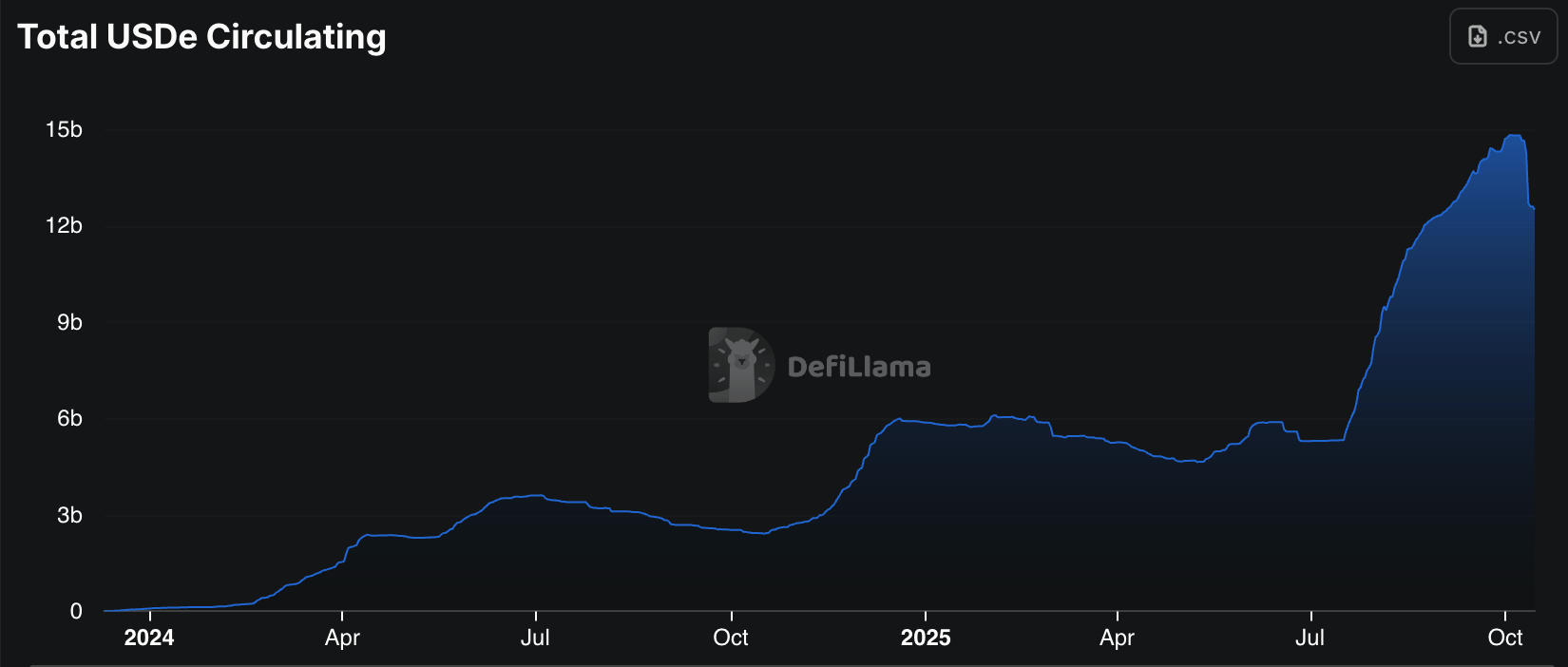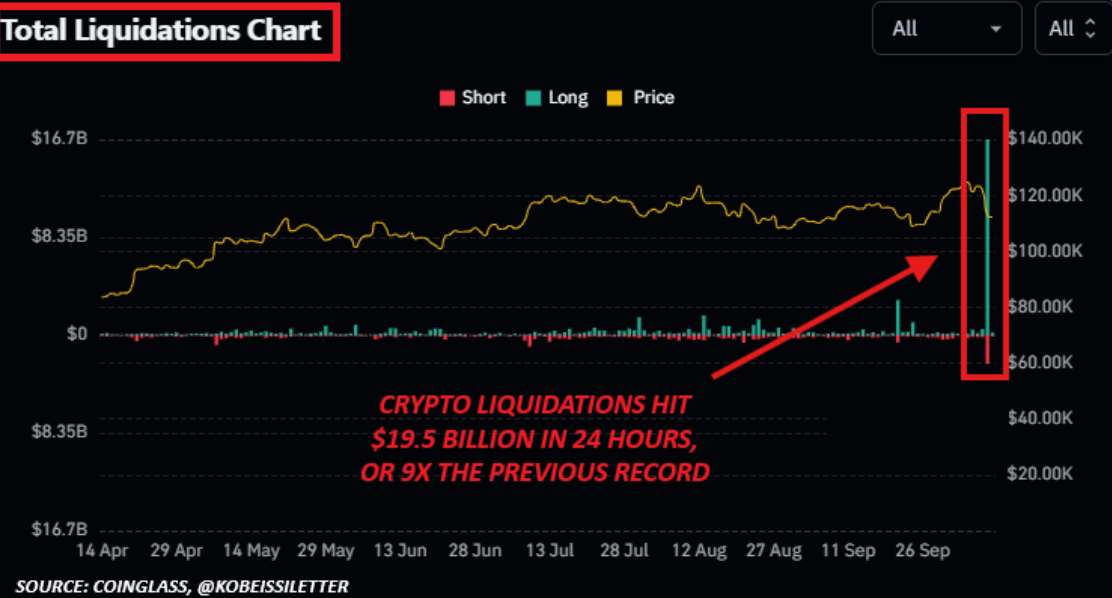On October 10th, 2025, the cryptocurrency market plunged into one of its most severe crises in recent years, marked by cascading liquidations, panic selling, and unprecedented volatility that erased hundreds of billions in market value overnight. Bitcoin and Ethereum led the charge downward, dragging altcoins and DeFi assets into the abyss. In the midst of this turmoil, Ethena's USDe stablecoin, the third-largest by market capitalization, boasting billions in circulation experienced a shocking depeg, trading as low as $0.65 on Binance (1). This momentary lapse in stability ignited widespread alarm among traders and DeFi participants, questioning the reliability of synthetic dollar protocols.

Crucially, this was not a systemic failure of the USDe protocol itself. On decentralized exchanges (DEXs) such as Curve and Uniswap, USDe maintained its peg near $0.99, and redemptions processed flawlessly at $1 parity through Ethena's smart contracts. The discrepancy underscored the vulnerabilities of centralized platforms under stress. This article provides a comprehensive analysis of the incident, delving into its causes, aftermath, and ripple effects, while highlighting the intricate ties to Ethena's governance token, ENA. For investors on platforms like Netcoins, where ENA is readily available for trading, grasping this relationship is essential for informed decision-making in a high-stakes DeFi landscape.
Background on Ethena and USDe

Ethena Labs emerged as a pioneering force in the DeFi space with its Ethereum-based synthetic dollar protocol, aiming to create a stablecoin ecosystem free from the frailties of traditional banking rails and fiat reserves. USDe represents the flagship product: a yield-generating stablecoin that achieves its $1 peg through sophisticated delta-neutral hedging. The mechanism is elegantly simple yet technically intricate USDe is minted against collateral like Lido's staked Ethereum (stETH), which is then paired with short perpetual futures positions on derivatives exchanges (2). This setup neutralizes price exposure, allowing the protocol to capture funding rates and basis spreads as yield, distributed to holders via staked variants like sUSDe.
By mid-2025, USDe had achieved remarkable adoption, powering liquidity in major DeFi protocols, serving as collateral in lending markets, and facilitating cross-chain transfers. Its market cap swelled to multi-billion dollars, positioning it as a credible challenger to giants like USDT and USDC. Users were drawn to its "crypto-native" appeal, no bank runs or reserve audits required and the passive income from staking, often exceeding traditional stablecoin yields.
Yet, synthetic stablecoins like USDe are not without peril. Their stability hinges on perpetual market access for hedging, sufficient collateral liquidity, and favorable funding rates. In bull markets, this thrives; in crashes, divergences in spot-futures basis or exchange outages can test the system's limits, exposing participants to tail risks that fiat-backed alternatives largely avoid.
The October 10th Market Crash

The meltdown began in the early hours of October 10, 2025, sparked by a toxic brew of macroeconomic headwinds potentially including surprise interest rate signals from central banks, escalating geopolitical tensions, and rumors of stringent U.S. regulatory actions against crypto exchanges. What started as a modest pullback in Bitcoin snowballed into a liquidity cascade, with Ethereum cratering over 20% and total crypto liquidations surpassing $19 billion within hours (3). Leveraged traders were obliterated, as margin calls triggered automated sell-offs that amplified the downward spiral.
Centralized exchanges buckled under the volume, with order books thinning and slippage soaring. This "Black Swan" episode echoed past crises like the 2022 FTX collapse, revealing persistent fragilities in crypto's infrastructure: over-reliance on leverage, thin liquidity during stress, and the contagion from interconnected DeFi positions. Stablecoins, meant as lifeboats, found themselves swamped by the waves of forced deleveraging (4).
The USDe Depeg Incident
Binance bore the brunt of the USDe drama, where the token's price catastrophically flashed to $0.65 amid the liquidation frenzy, vaporizing an illusory $2 billion in market cap and inflicting severe losses on traders executing hasty exits. High-frequency arbitrage bots and panicked retail orders exacerbated the plunge, as exchange liquidity pools for wrapped USDe tokens drained amid system-wide overload (5).
In stark contrast, the on-chain reality painted a different picture. DEXs like Curve and Uniswap saw USDe oscillate minimally around $0.99, backed by deep automated market maker (AMM) pools. Ethena's core protocol remained unbreached, with minting and redemption functions operating at full $1 parity, confirming ample collateral coverage (6). Ethena's rapid response communication emphasized this resilience, while Binance acknowledged the fault lay in its infrastructure specifically, glitches in handling wrapped assets and oracle delays.
The exchange acted swiftly, compensating affected users to the tune of $283 million and implementing temporary trading halts. By day's end, USDe clawed back to parity across venues, but the episode left scars, with trading volumes spiking and confidence temporarily shaken (7).
Causes and Market Implications
Post-mortems revealed a perfect storm: Binance's high-leverage environment amplified liquidation cascades, compounded by technical hiccups in wrapped token bridges and insufficient liquidity buffers for USDe pairs (8). Unlike pure algorithmic failures (think TerraUSD's death spiral), Ethena's hedging actually benefited from the crash short perps generated profits as prices fell, padding reserves. No exploits or undercollateralization occurred, validating the protocol's design under duress.
Nevertheless, the incident ignited debates on synthetic stablecoin architecture. Critics highlighted over-dependence on centralized venues for hedging liquidity and the "black box" risks of perpetual markets during volatility spikes. It spurred industry-wide introspection: enhanced circuit breakers on exchanges, diversified hedging across multiple venues, and improved oracle redundancies (9).
Regulatorily, the depeg drew fresh scrutiny, potentially accelerating frameworks for stablecoin oversight. For DeFi at large, it accelerated a shift toward decentralized liquidity primitives, underscoring that true stability demands on-chain robustness over exchange whims.
Relation of USDe to the ENA Token
ENA, Ethena's governance and utility token, forms the beating heart of the protocol's decentralized evolution. Holders wield voting power on critical decisions from risk parameters and collateral types to fee distributions and ecosystem grants while staking ENA as sENA unlocks yields from USDe's operational revenues, including minting premiums and hedging surpluses. This creates a flywheel: greater USDe usage funnels value to ENA, incentivizing alignment between token holders and protocol health.
The depeg's shadow loomed large over ENA, which cratered up to 40% in tandem with USDe fears, as markets priced in contagion risks to Ethena's treasury and adoption trajectory. Yet, as the exchange-specific nature clarified, ENA staged a vigorous rebound, rewarding believers in the underlying tech.
Netcoins enhances accessibility by listing ENA for seamless trading, enabling users to speculate on Ethena's recovery, hedge stablecoin exposures, or participate in governance. In a volatile ecosystem, ENA offers leveraged upside to USDe's dominance, but demands vigilance; its beta to protocol events amplifies both booms and busts.
Resources:
- Third-Largest Stablecoin Briefly Loses Dollar Peg in Crypto Rout
- Ethena Docs
- Ethena's USDe Briefly Loses Peg During $19B Crypto Liquidation Cascade
- The October 11, 2025 Crypto “Black Swan” Crash: An Academic Analysis
- $2B stablecoin depeg exposes cracks in crypto’s ‘synthetic dollar’ system
- The Ultimate 10/10 Crash Autopsy
- Binance Covers $283 Million Loss After Wrapped Token Crash
- Did USDe Really Depeg? The Truth Behind Binance’s $0.65 Crash Explained
- $2B stablecoin depeg exposes cracks in crypto’s ‘synthetic dollar’ system
The information provided in the blog posts on this platform is for educational purposes only. It is not intended to be financial advice or a recommendation to buy, sell, or hold any cryptocurrency. Always do your own research and consult with a professional financial advisor before making any investment decisions. Cryptocurrency investments carry a high degree of risk, including the risk of total loss. The blog posts on this platform are not investment advice and do not guarantee any returns. Any action you take based on the information on our platform is strictly at your own risk. The content of our blog posts reflects the authors’ opinions based on their personal experiences and research. However, the rapidly changing and volatile nature of the cryptocurrency market means that the information and opinions presented may quickly become outdated or irrelevant. Always verify the current state of the market before making any decisions.



.png)

.png)
.png)




